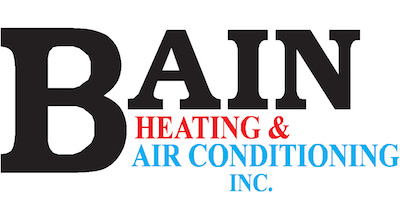
If you’re needing air conditioner installation in Heflin, you should also be looking at your new air conditioner’s SEER rating.
SEER means Seasonal Energy Efficiency Rating. In a nutshell, it looks at how efficient your air conditioner is at transforming electricity into cold air. A high number signifies your air conditioner is more efficient, which is good for your energy costs.
However, there are many different models on the market for air conditioners. And a better SEER ranking often includes a higher cost. So, how can you determine which one is ideal for your residence?
At Bain Heating & Air Conditioning, we provide a free, no-pressure home comfort analysis. You can schedule one by contacting us at 256-946-4631. Our knowledgeable air conditioner installers will collaborate with you to help you pick the right air conditioner for your needs. Plus, they’ll also give you a free, no-obligation estimate.
For the time being, let’s discuss SEER ratings and how they can impact your loved ones’ comfort. And your utility bills.
What Does the SEER Rating Really Matter?
In 2016, the federal government developed new SEER criteria. New air conditioners are mandated at minimum 13 SEER in the northern United States and 14 SEER in the southeast and southwest. If you’re not sure when you had your air conditioner installed or what its SEER ranking is, you can check the sticker on the unit outside your house. If you can’t see the sticker, you can get in touch with us at 256-946-4631 for support.
If your air conditioner was put in in advance of that date, it’s presumably much less efficient. Cooling technology has swiftly evolved in the past couple of years, with major breakthroughs in energy efficiency and smart home capacity. Pairing your new air conditioner with a smart thermostat could help you spend less on cooling bills, since the thermostat can seamlessly manage your temperature settings when you’re gone.
If your present air conditioner has a SEER rating between 8 and 10, installing a 14-SEER system could save you an estimated 30–50% on annual electricity bills. Your savings are contingent upon your air conditioner size and your thermostat settings.
Is the Higher the SEER the Better?
An air conditioner with a better SEER rating will be more efficient at converting electricity for cooling. The best efficient ones, which can go as big as 26 SEER, have ENERGY STAR® endorsement. This certification signifies the air conditioner matches EPA guidelines for energy savings and environmental conservation.
While ENERGY STAR air conditioners are typically pricier, you’ll normally get the difference back over time through lower air conditioning bills. These air conditioners, which are generally rated 16 SEER and better, use about 8% less power than other new units, according to ENERGY STAR.
One of the biggest differences between a 14 SEER and 16 SEER is variable-speed technology. A variable-speed air conditioner can cool at varying speeds. This refines comfort for your home while keeping your power costs low. It can also keep temperatures and humidity more consistent, since it can operate for longer without needing a lot more energy.
When getting a variable-speed air conditioner, you’ll have to make sure that your furnace or air handler is compatible. This is since your air conditioner uses this equipment’s blower to disperse cold air around your home. Furnaces only run for around 20 years, so if yours is getting old, we suggest getting furnace installation at the same time so you can get all the advantages of your variable-speed air conditioner.
When you’re prepared to replace your air conditioner, the cooling pros at Bain Heating & Air Conditioning are here to assist you. Give us a call at 256-946-4631 to schedule your free home comfort analysis today.


